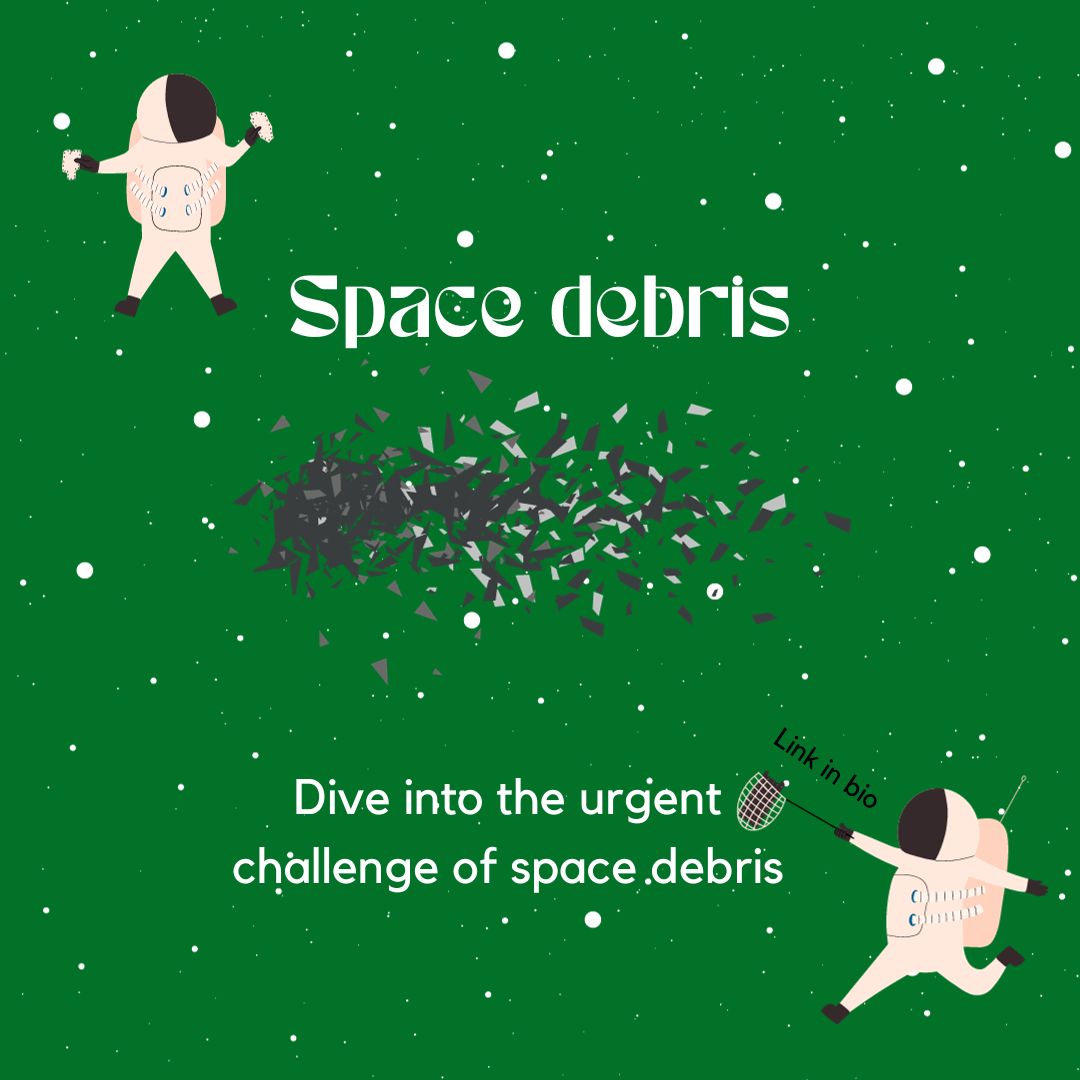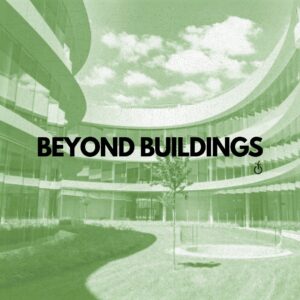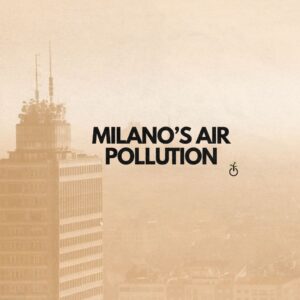Throughout the span of human history, our enduring fascination with the cosmos has been unwavering. It was during the transformative decades of the 1950s and 1960s that remarkable technological advancements ignited the space race, leading to the historic launch of Sputnik, the first satellite in 1957. Since that pivotal moment, thousands of rockets, spaceships, and satellites have embarked on their celestial journeys.
However, not all of these structures have been brought back down to earth upon completing their mission. Instead, some remain suspended in orbit, evolving into what is referred to as “space debris” or “space junk”. The following article investigates where such space debris comes from, explores the reasons why it represents a pressing sustainability concern, and examines potential avenues for addressing this challenge.
Space debris encompasses any human-made objects in space no longer serving any purpose. This involves parts of old and defunct satellites, remnants from missiles and equipment left behind by astronauts. Two primary factors contribute to the proliferation of space debris: On the one hand, satellites in distant orbits may be too resource-intensive to deorbit safely and thus left in space beyond their useful lifespan. On the other hand, debris from accidental collisions may cause thousands of tiny particles of space debris, which are impossible to collect and get out of orbit. Additionally, anti-satellite missiles, which actively shatter satellites into myriad fragments, exacerbate latter category of space debris. Finally, in more rare cases, objects are lost by astronauts (such as a spare glove lost by astronaut Ed White in 1965) or even actively left in space (such as a drawing by Andy Warhol left behind by the Apollo 12 mission in 1969).
The predominant factor fueling the expansion of space activity – and thus space junk – is the emergence of satellite constellations. Up until 2015, almost 60 years since Sputnik launched, the cumulative count of satellites sent into space stood at about 7500. Within the subsequent eight years, this figure has more than doubled. The primary catalyst behind this surge can be attributed to SpaceX’s Starlink program. With frequent launches of up to 50 satellites at a time, Starlink had just short of 4000 satellites in space at the end of 2022 and constitutes half of the operational satellites currently encircling our planet.
Source: McKisney, 2021, based on Gunter’s space page & Union of concerned Scientists Database.
The pieces of space debris exhibit a remarkable diversity in size. Some, such as entire inactive satellites, are very large, whereas fragments resulting from satellite crashes can be miniscule. In total, experts count about 30 000 pieces of space debris larger than 10 cm circle around our planet. However, they further estimate that for every trackable piece, there may be hundreds of non- trackable fragments too small to be discerned by our detection systems. The number of debris generally increases with diminishing fragment size. Depending on their altitude, these fragments can stay in orbit for anything from a few months to hundreds of years.
Fortunately, at present, space junk does not pose a direct threat to space exploration. However, it does present a significant risk to active satellites in orbit. Currently, there are approximately 7 702 operational satellites orbiting Earth. The ambitious plans of companies like SpaceX and Amazon to deploy new groups of satellites known as mega constellations add to this risk. This expansion could potentially increase the total number of satellites in orbit to more than 50 000. With this surge in satellite deployments, the threat of space debris colliding with operational satellites becomes increasingly pronounced.
The escalating number of satellites and the associated heightened risk of collisions, which in turn leads to more space debris generation, brings forth a phenomenon known as the Kessler effect. The Kessler effect postulates that as the volume of space debris surpasses a certain threshold, it triggers a chain reaction whereby all satellites in Low Earth Orbit (LEO) perpetually face a heightened danger of collision.
Notably, the repercussions of space debris are not confined solely to outer space; they extend to our own environment. Objects abandoned in space emit various chemicals into the Earth’s atmosphere, while the re-entry of space debris deposits hazardous levels of alumina into the upper atmosphere. These combined actions contribute to the ongoing depletion of the ozone layer.
This unregulated, “Wild West” environment poses immediate risks to humanity as well. The proliferation of objects in space leads to an increase in uncontrolled re-entries, resulting in an alarming statistic: there is approximately a one-in-ten chance that, within the next decade, falling space debris will cause a fatality, as indicated by a study published in the scientific journal Nature Astronomy.
Many of the launches that result in uncontrolled re-entries are synchronised with Earth’s orbit and rotation, concentrating the risk along a specific path, particularly around equatorial regions. This disproportionate concentration of risk places an undue burden on countries near the equator. These countries often already grapple with the broader consequences of climate change and face challenging socio-economic conditions, despite not being the primary launchers of the satellites responsible for this situation.
Addressing space pollution, or space debris, is a complex challenge that requires international cooperation and concerted efforts. Entities like the United Nations’ Committee on the Peaceful Uses of Outer Space (COPUS) and the European Space Agency (ESA) are already collaborating to establish guidelines for space travel, satellite deorbit, and junk removal. But these recommendations were made before the serious proliferation of space activity (effectively an increase in space junk) and above all countries are not obligated to follow them.
Spacecraft and launch vehicle design should aim to minimize the release of debris during their operational lives and at end-of-life since the space debris growth rate is largely due to collisions. But most of the debris in space has no way of maneuvering because it is defunct or the fragments of a larger satellite. For these objects, passive deorbiting—waiting for them to reenter the atmosphere on their own—is currently the only way they can deorbit.
However, a lot of collisions involved in space operations could be avoided with reliable data that would enable tracking of these objects and debris. Improving observation technology would make this easier and would improve collaboration among space agencies – effectively promote the sharing of data and facilitate crucial exchanges of information.
These vehicles should also be designed with end-of-life disposal in mind. This includes moving defunct satellites to designated specific regions in space, known as graveyard orbits or allowing them to naturally deorbit into Earth’s atmosphere to burn up.
An important point is also to prevent explosions by passivating vehicles at the end of their life which is a removal process of any internal energy contained in the vehicle at the end of its mission.
Furthermore, the removal of mass (5–10 large objects per year) from regions with high object densities and long orbital lifetimes may be also necessary.
As we push the boundaries of space exploration and technology, we must recognize that the sustainability of our activities beyond Earth depends on our ability to address the issue of space junk effectively. The ever-growing cloud of space debris is not a problem that will resolve itself; it will only worsen without collective action. The potential for collisions, disruptions to satellite services, reaching a point where the amount of junk just creates more and more space debris seems inevitable. However, it is essential to emphasize that this sustainability challenge is not insurmountable. Innovative solutions, from improved space debris tracking to active removal technologies, are emerging as well as new international guidelines. By embracing these solutions and international collaboration, we can protect our environment and outer space for future generations.
By Lucia Buser, Valerio Costa and Lucie Windels.
Sources:
https://www.mckinsey.com/featured-insights/mckinsey-explainers/what-is-space-junk
https://aerospace.org/article/brief-history-space-debris
https://www.esa.int/Space_Safety/Space_Debris/About_space_debris
https://www.mckinsey.com/industries/aerospace-and-defense/our-insights/look-out-below-what- will-happen-to-the-space-debris-in-orbit
https://blog.ucsusa.org/syoung/how-many-satellites-are-in-space-the-spike-in-numbers-continues/
https://greenly.earth/en-us/blog/ecology-news/why-is-space-junk-a-problem-both-for- exploration-and-the-earth
https://www.nhm.ac.uk/discover/what-is-space-junk-and-why-is-it-a-problem.html
https://www.weforum.org/agenda/2022/07/environmental-impact-space-debris-how-to- solve-it/
https://mashable.com/article/space-junk-unregulated-global-south https://www.nytimes.com/2021/05/12/science/space-junk-climate-change.html https://nanoavionics.com/blog/how-many-satellites-are-in-space/
https://www.esa.int/Space_in_Member_States/France/Point_de_situation_sur_les_debris_s patiaux
https://nap.nationalacademies.org/read/4765/chapter/10#136
https://ec.europa.eu/research-and-innovation/en/projects/success-stories/all/solution- problem-space-junk




